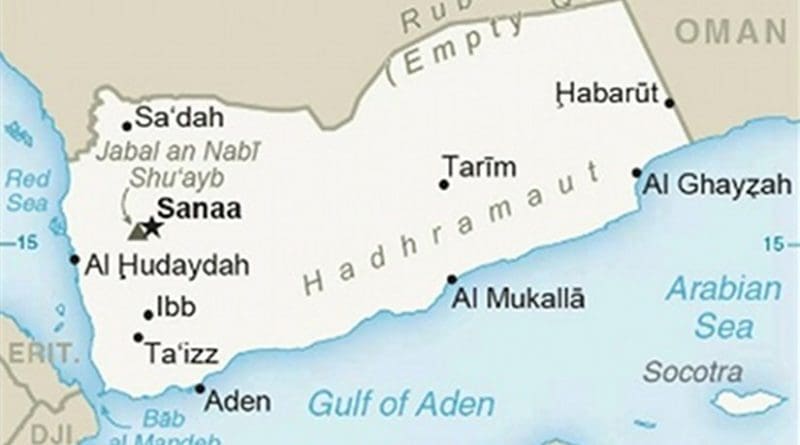Al Qaeda In Expansion Mode: Beyond Yemen And Somalia
“Things have been quite hectic over here,” is the reason laid out by the Al Qaeda in the Arabian Peninsula (AQAP) for the delay in bringing out the sixth issue of its English-language magazine “Inspire.” The issue was released on the Web on July 19.
Hectic indeed it would be for the outfit, which not only sees a greater role for itself in Yemen, where it is based, but also in Somalia, across the Gulf of Aden. From a broader perspective, the tactic could be a part of the outfit’s strategy of energising its franchises with an objective of widening the area of conflict and hitting at its enemy, the US, in places where such attacks are the least expected.
AQAP, in the latest issue of “Inspire” describes Yemen as a country which “is falling apart.” As a result, the “work of the mujahidin is growing in bounds.”
Intelligence reports now available indicate that the chaos in Yemen is allowing the AQAP to pursue its goal of conflation of Jihadi zones unhindered.
In Somalia, the AQAP is aiding and prodding the terrorist outfit al-Shabaab to take up responsibilities beyond the Somalian territory. Al-Shabaab controls north and central parts of Somalia and a large portion of its capital Mogadishu and is trying to overthrow the UN-backed transitional government in the country.
The links of al-Shabaab with Al Qaeda was never in doubt. Following the May 2 death of Osama Bin Laden, al-Shabaab had welcomed the appointment of Ayman al-Zawahiri as the next chief of the organization and promised cooperation. But the latest revelations suggest that the links go much deeper and unless controlled, add to the lethality of al-Shabaab as a trans-national terrorist outfit.
Interrogation of Ahmed Abdulkadir Warsame, a nabbed al-Shabaab commander, en route from Yemen to Somalia, has provided vital information about the growing operational linkages between the AQAP and the al-Shabaab.
Contacts between Yemeni and Somali militants go back to a few years. Al-Shabaab bought weapons and explosives from Al Qaeda contacts in Yemen using money from piracy and kidnap-for-ransom schemes. This trade has intensified over the years to include not just weapons, but also terrorists crisscrossing over the Gulf of Aden and training with explosives in each other’s country.
In return, the AQAP has asked the al-Shabaab to carry out attacks outside Africa. It even suggested a new name for al-Shabaab, “Al Qaeda in East Africa,” to reflect the future trans-national character of the Somalian outfit. It probably spurred al-Shabaab to carry out two suicide bombings — at a rugby club and at an Ethiopian restaurant — in Kampala, capital of Uganda in July 2010.
The attacks killed 74 people, including an American aid worker. Uganda along with Burundi has contributed 5000 troops to an African Union peacekeeping force in Somalia. This, however, remains al-Shabaab’s only known attack outside Somalia. The group has resisted moves to change its name for the fear of diluting its support base within Somalia.
The information of the coming together of the two conflict zones — Yemen and Somalia or the Arabian Peninsula and the East of Africa — has been further supported by the information extracted out of the digital files from the Abbotabad den of Osama bin Laden. It has been indicated that Nasir Wahayshi, an AQAP leader who previously operated as Bin Laden’s personal secretary, was assigned the role of establishing an operational link between the AQAP and al-Shabaab.
A former US official was quoted in the media saying that “Some of the thumb drives were smuggled out of Somalia and through Yemen before couriers hand-delivered them to Bin Laden in the Pakistani city of Abbottabad.”
The intensity of the linkages established and consequent augmentation in the ability of the al-Shabaab has been reiterated in subsequent statements by Adm. Michael G. Mullen, chairman of the Joint Chiefs of Staff, who recently said that Al Qaeda operatives in Yemen are “trying hard to kill us” and in Somalia “there is a growing cell and a growing connection to Al Qaeda that we are all concerned about.” This explains the US drone strikes in Yemen in May and in Somalia in June 2011.
Outsourcing terror is a tactic that has been adopted by the militant/insurgent outfits around the world. In India’s insurgency affected Northeast, the Naga insurgents encouraged similar franchises in neighbouring states. These outfits were armed and trained in return for a share from the extortion amount. The strategy widened the area of conflict and generated finances for the parent outfit.
The project of al-Shabaab’s full merger with the Al Qaeda will, however, be somewhat delayed as a result of the setbacks the outfit has received in the past few months. Since March this year, it has lost at least three top commanders including its Emir, Ibrahim al Afghani. While Afghani, with years of experience in the Afghan conflict is believed to have been killed in a 25 June drone strike in southern Somalia, al-Shabaab’s senior commander Fazul Abullah Mohammed was killed in a check point shootout on the outskirts of Mogadishu by the Somali forces on 8 June. Previously, on 19 March, Sheik Daud Ali Hasan, al-Shabaab’s “senior official” was killed by unidentified gunmen in the southern port of Kismayu.
However, al-Shabaab is still very active in Somalia and will be amenable to carry forward the AQAP’s game plan in future. The conflation of the Arabian Peninsula, considered as the most dangerous node in the Al Qaeda’s terror network and East Africa has the potential of posing enormous challenges to the US goal of putting down “the base.”
This article was published first by Al Arabiya and reprinted with permission

